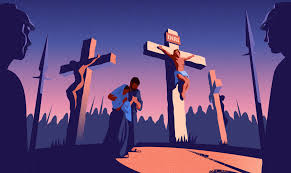The B1G will have a 2020 fall football season, with some precautions.
September 23, 2020
Just after 8 AM on Wednesday, October 26, the Big Ten Conference announced that there was a unanimous vote from the Big Ten Council of Presidents and Chancellors to resume the football season (via Twitter.)
Amidst a month and a half holdout, when there was a report on Monday that there was supposed to be a vote to determine whether or not the 2020 season would be played, speculations grew that this would finally be the time that Kevin Warren and the rest of the B1G announced that football was officially back. Unfortunately, football fans across the country had to continue to keep their hopes high, as we woke up on Tuesday morning with no statement.
Not much further into the morning, Nebraska President Ted Carter, unaware that he was on a hot mic, said “We’re getting ready to announce the Huskers and Big Ten football tonight.” When this news was reported, fans on all media platforms had different reactions. Could the B1G really be back? Was Ted Carter telling the truth? Nobody could quite wrap their heads around the update, but it certainly brought excitement.
As the report had spread to radio shows and television casts, fans started feeling like this rumor was going to end up being a fact. Although it didn’t come that night either, it was confirmed the next morning, bringing a collective explosion of joy from all Big Ten fans.”Everyone associated with the Big Ten should be very proud of the groundbreaking steps that are now being taken to better protect the health and safety of the student-athletes and surrounding communities.” said Dr.Jim Borchers, the Head Team Physician at The Ohio State University. He is also co-chair of the Return to Competition Task Force medical subcommittee.
The Big 10 has set out a list of protocols to ensure that everyone surrounding the return to football will be as safe as possible. These protocols include daily antigen testing, enhanced cardiac screening, and “an enhanced data-driven approach when making decisions about practice/competition.” Student athletes, coaches, trainers, and other personnel that will be on the field for game day have to undergo the antigen testing. Student athletes that test positive for the coronavirus through point of contact would require daily testing, and a PCR (polymerase chain reaction) test to confirm the POC test. To go along with the medical protocols approved, all 14 Big Ten schools plan to establish a cardiac registry in an effort to study the effects of COVID-19 for positive student-athletes. If a student tests positive for coronavirus, they are unable to return to game competition for three weeks.
“The data we are going to collect from testing and the cardiac registry will provide major contributions for all 14 Big Ten institutions as they study COVID-19 and attempt to mitigate the spread of the disease among wider communities.” (from bigten.org)
Each school will also designate a Chief Infection Officer (CInO) who will oversee the data that is collected and reported from the Big Ten Conference. The conference will is u data provided by each CInO to make decisions about continuing practice and competition, as determined by positivity rate, based on a rolling average from one weeks time.
Now that teams like Nebraska, Ohio St, Iowa, and Michigan are returning to the field, expect there to be a lot more buzz surrounding college football on Saturdays. Fans from all across the Midwest could not be more excited to know that they will get to see their team playing again, even if they can’t be in the stands. Wednesday, October 26th became a historic day when an effort from Big 10 fans, parents, and schools finally broke through to ensure that without a doubt, football is back.



